02 Jul Alternative Lawns that won’t go brown in summer
With hotter summers, it’s becoming more difficult to keep traditional grass lawns looking good all year round. We’re looking at alternative lawns that won’t go brown in summer.
What is a lawn?
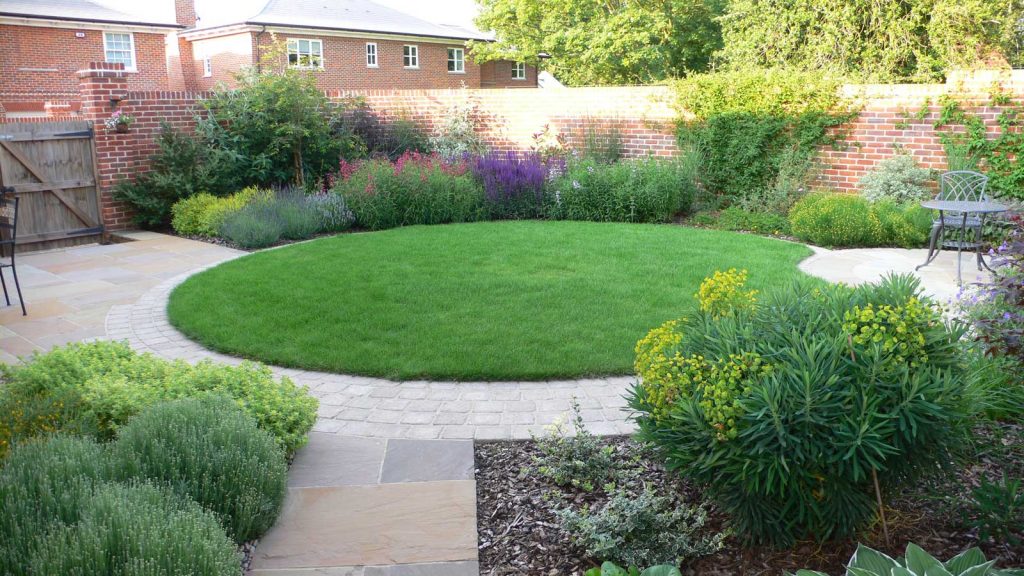
Wickipedia defines a lawn as “an area of soil covered land planted with grasses and other durable plants which are maintained at a short height and used for aesthetic and recreational purposes”
In my interpretation, that means an area of short plants that look good and can be walked on.
Mown grass, is of course the traditional choice for a lawn, and I have to confess it’s my favourite. But there are alternative lawns that won’t go brown in summer. Let’s look at them one by one – starting of course with a paragraph in defence of natural grass.
- Natural grass from turf or seed
- Artificial turf
- Low growing sedum plants
- Clover and other low growing bee-friendly plants
- Creeping thyme
- Camomile Lawn
- Gravel garden
In defense of the natural grass lawn
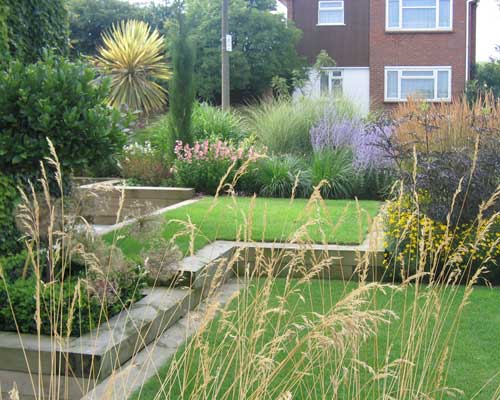
There’s something quintessentially English about a natural grass lawn. And I must confess that I do like to include a traditional lawn in nearly all of my garden designs. The colour and texture of well-maintained grass sets off the rest of the garden. And of course there’s nothing better for sitting (or playing) on.
Natural grass helps to soak up excess rainwater, it absorbs carbon dioxide, pumps out oxygen and cools the area around it. It’s frost hardy, will survive nearly everything our climate throws at it, and in general, it’s relatively easy to maintain.
Turf or grass seed is readily available in the UK and compared to many of the alternatives it’s very cost effective.
In terms of maintenance, Essex and Suffolk are lucky to have some fabulous lawn care professionals who can help you out for a moderate fee.
But not everyone wants a grass lawn and these days. One reason is that it can be very difficult to keep the grass green all year round. In a hot dry summer, the plants will turn straw coloured. And whilst that’s not a problem to the plants (it’s their natural survival mechanism) visually, it’s not ideal.
Artificial Turf
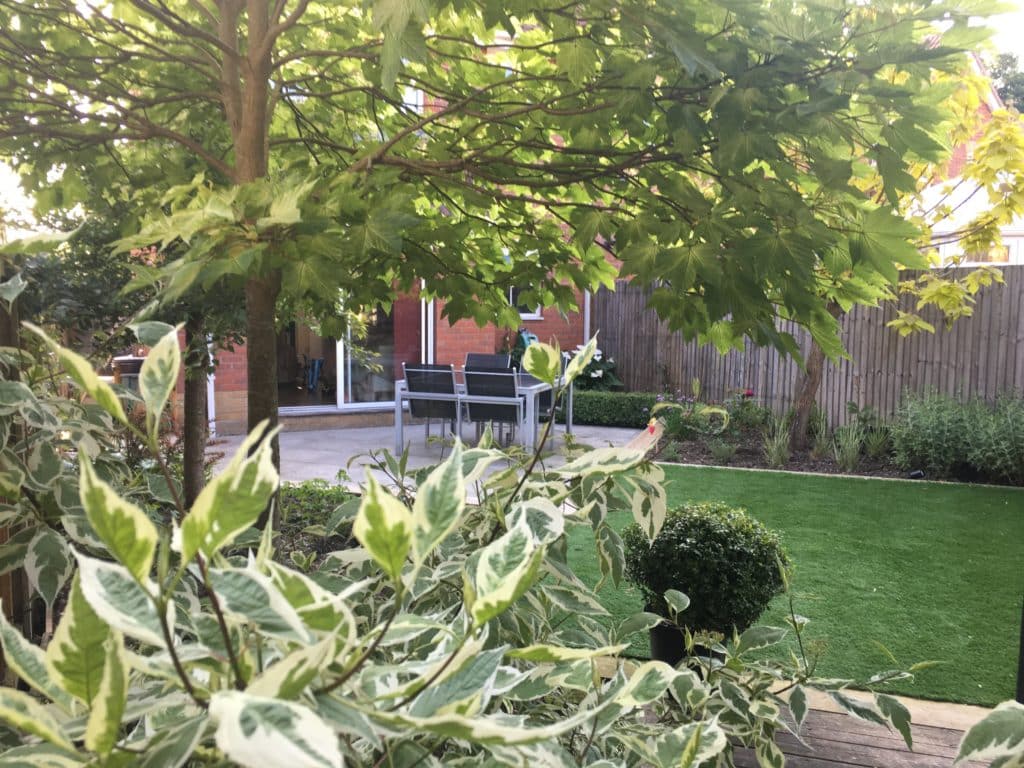
Back garden with an artificial grass lawn. It’s neat, its practical and it doesn’t mind a bit of neglect.
Modern artificial turf can look and feel just like a natural lawn. Be sure to choose a good quality artificial grass though – some of the cheaper alternatives are not at all durable.
Of course, there are fewer environmental benefits from an artificial lawn. There’s no photosynthesis so no CO2 absorption and no oxygen production. No worms for the blackbirds either. Oh – and for goodness sake don’t drop any BBQ coals on it or have garden mirrors directed towards the pile. If the fibres melt, they can’t be fixed.
Drainage is achieved with a very carefully installed buildup and most types of artificial grass can be recycled at the end of its useful life (around 20-25 years depending on quality, installation technique and usage)
The best thing about good quality artificial turf is UV stable and will keep its colour 24/7/365. It always looks good. Maintenance is simple – just an occasional tickle with a stiff broom to lift the pile and disperse any debris. You will need to remove autumn leaves but that’s about all. There’s even pet friendly artificial turf that repels pongs.
Low growing sedum plants
I have a special place in my heart for succulent plants. The texture is soooo touchable and the low-pollen flowers are a magnet for butterflies and bees. Sedums are thoroughly independent little plants and if you choose the right species, they’re frost hardy and will provide all year round interest.
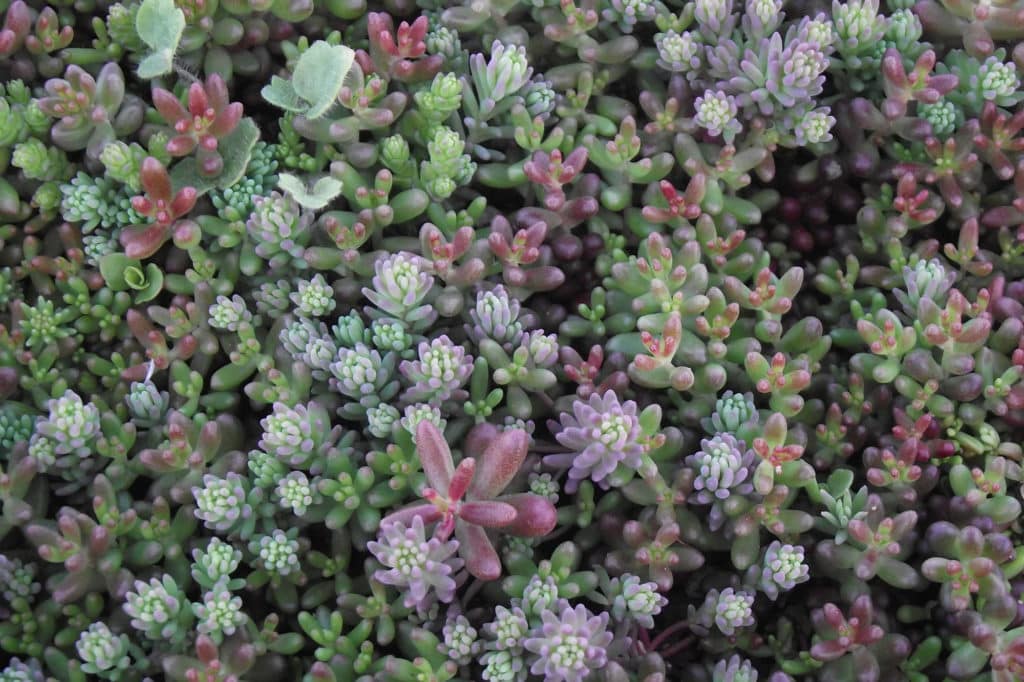
Mixed low growing sedum plants make a beautifully low maintenance lawn
There is virtually no maintenance involved in caring for a sedum lawn. You will need to make sure the plants have good drainage and create the lawn in such a way that any weeds that try to invade will be killed by that summer drought. (sedums are very drought tolerant). Sedum matting was originally developed for low maintenance green roofs but is easily adapted for use as ground cover. And because it comes with really good plant coverage, there’s no waiting for the foliage to fill in and cover the growing medium.
The only disadvantage with a sedum lawn is that it’s not terribly hard wearing. By all means wander across it from time to time but the plants won’t tolerate a lot of wear and tear. If you need to cross the lawn regularly, it’s worth designing in some stepping stones or a path.
Clover and other low growing bee-friendly plants
Some of my clients love the idea of a species rich lawn. Others really don’t fancy it. Personally I think it all depends on the style of your garden. If you like blowsy plants, soft lines and the sound of bees humming, a clover lawn could be just the thing for you. If however you want a garden with clean lines, well defined shapes and a carefully controlled colour palette, this probably isn’t the right alternative lawn for you.
Grow this type of lawn from seed for low cost or why not investigate different types of wildflower turf. New to the market in 2019 is a low growing species rich turf with durable grasses and splashes of colourful flowers. It’s lower maintenance too – mow once every 2 -3 weeks.
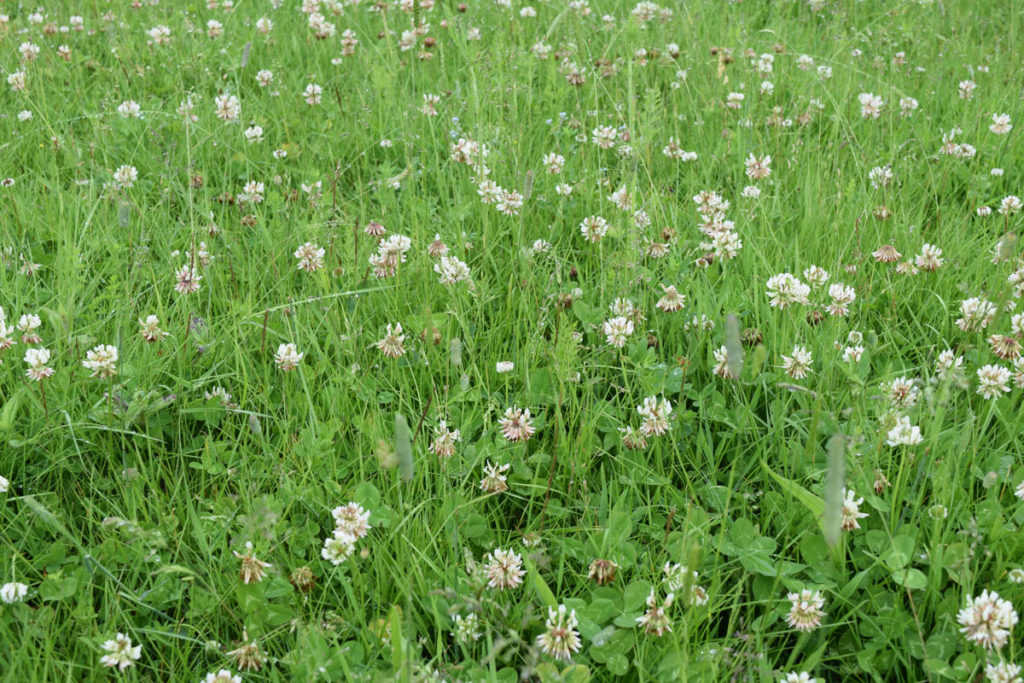
A species rich lawn like this needs mowing less frequently. Some of the grasses may lose their colour in very dry weather but other plant species will make up for it. Plus, you get flowers.
Image courtesy of Harrowden Turf Ltd
A herbal lawn
Low growing thyme plants make a great lawn. As you walk across them you’ll be enveloped in a sweet aroma. Creeping thyme Thymus serpyllum only grows to about 5cm tall and has delightful purple flowers in early summer. It doesn’t seem to mind being walked on either and unlike some other varieties, it’s not prickly to sit on.
Mediterranean-type herbs like thyme love well drained soil and won’t mind a dry summer. Be sure to prepare the soil properly though – the clay soils in our area can be a bit too heavy for herbs. Creeping thyme is frequently found growing wild in the Brecklands of Norfolk and Suffolk where the soil is quite sandy. So if you want to try a thyme lawn, be sure to improve drainage and incorporate lots of horticultural grit into the soil.
Chamomile Lawn
Just like thyme, chamomile is easy to care for and smells divine when it’s crushed. It’s not particularly hard wearing though and could only be used occasionally.
Sadly, Chamomile is not a fan of clay soil. Whilst it sounds idyllic it may not thrive in your garden. Think hard before investing in a chamomile lawn.
Gravel Garden
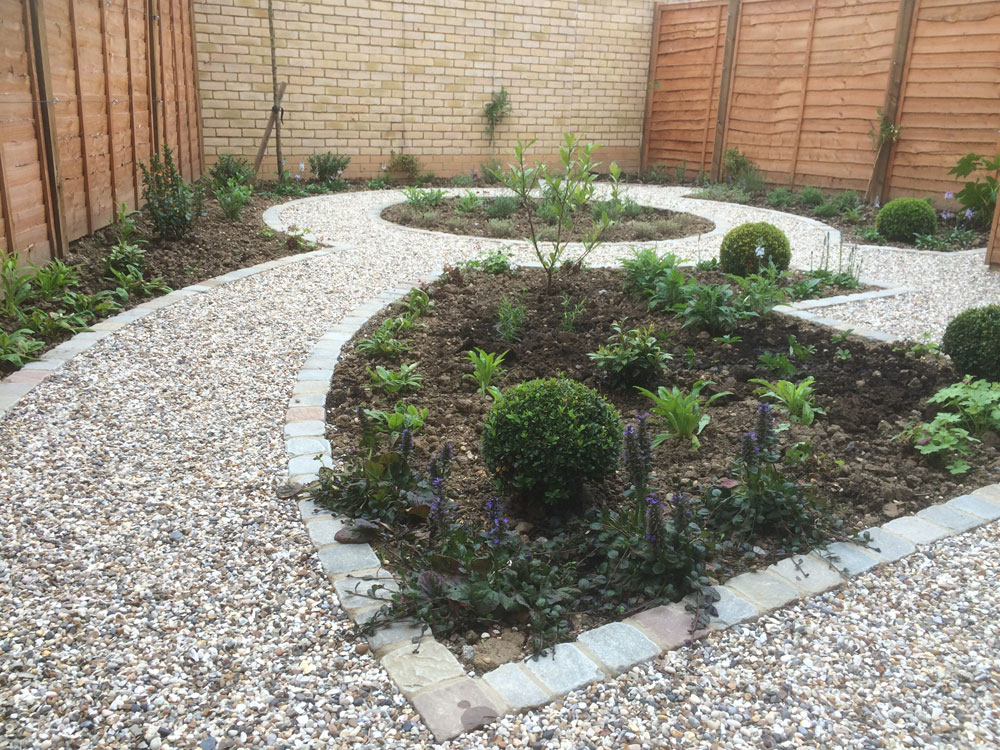
The owners of this small back garden felt that a natural lawn would have too much concentrated wear and tear so they opted for this version of a gravel garden.
Over time the planting will fill the beds and tumble over the edges to give a softer look and feel.
Gravel gardens are a really good alternative to a lawn – particularly if you don’t want to sit on the ground!
A gravel garden ticks all the boxes for natural drainage, lots of plants, low maintenance and interesting aesthetics. Plus it will look good all year round.
Thinking about lawn alternatives? Here are some useful links
Designing drought tolerant gardens
Planning garden improvements for next year
Landscaping budgets – why you need to think about them early in the project.
Talk to a garden designer about alternative lawns that won’t go brown in summer



Sorry, the comment form is closed at this time.